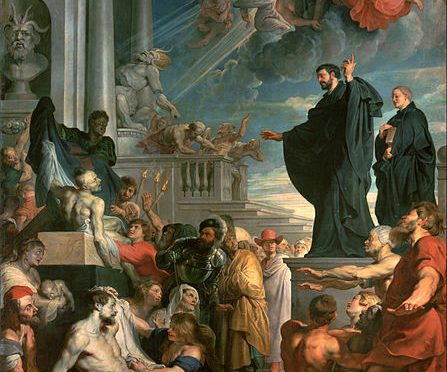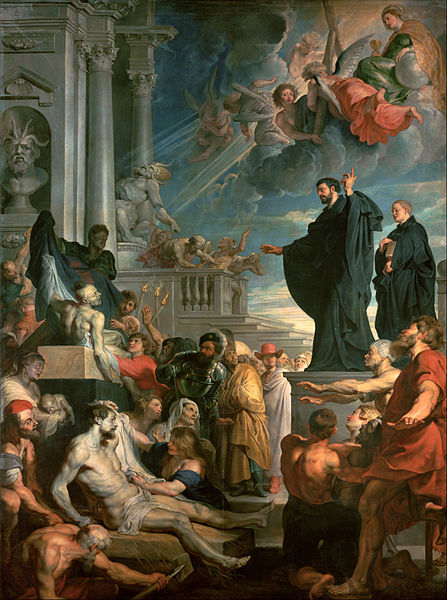Saint Ignatius isn’t the only Catholic Saint born in the Basque Country. His fellow Jesuit, Saint Francis Xavier, was also born in the Basque Country. However, unlike Saint Ignatius, Saint Francis Xavier spent much of his adult life traveling and proselytizing to the peoples of India and Japan, amongst others. He was known for trying to preach in the local languages.
- Francisco de Jaso y Azpilicueta, the man who would become Saint Francis, was born on April 7, 1506, in the town of Javier, then in the Kingdom of Nafarroa. His father, Juan de Jaso, was president of the Royal Council of Nafarroa while his mother, María de Azpilcueta, was from a notable royal family.
- Francisco grew up in a turbulent time. In 1512, when Francisco was 6 years old, the Kingdom of Aragon invaded Nafarroa. Francisco’s brothers fought in the war while his father attended to Juan de Albret (or John III of Nafarroa). Only three years later, Nafarroa was annexed by Castilla, ending the independence of the kingdom (though part of it survived for some time longer on the other side of the Pyrenees).
- It was during this time that Francisco decided to go to Paris to study. He left for Paris in 1525 to attend the Collège Sainte-Barbe, University of Paris. It was here that he met Iñigo López de Oñaz y Loyola, the future Saint Ignatius. While it took Iñigo some time, in 1533 Francisco dedicated himself to his colleague and his mission, becoming one of the first Jesuits. He was ordained as a priest in 1537.
- In 1540, he was sent to the East Indies at the behest of King John of Portugal, who wanted missionaries to spread the Catholic faith in Portugal’s new possessions. In April of 1541, he finally began his journey, but had to stop at Mozambique along the way, where he spent several months. There, he saw how the Portuguese exploited the local populace. In May, 1542, he finally reached Goa, India, the capital of Portuguese India. He then moved on to Cape Comorin to evangelize amongst the Paravas. Wherever he went, he made it a point to learn the local language to better perform his missionary duties.
- Francisco worked for several years in the region, jumping back and forth between India and what would become Sri Lanka. In 1547, he met a Japanese man who had sought him out. Anjirō, who became the first Japanese Christian, accompanied Francisco to Japan in 1549, where he stayed for over two years. His efforts in Japan were not nearly as successful as those in India. Even so, a small Christian community was established in Japan.
- His last mission would take him to China. He reached Chinese territory in August, 1552, but transport to mainland China was significantly delayed. Francisco died of fever in September, 1552, not reaching the Chinese mainland. His body was taken back to Goa. However, several of his bones were sent to other places as holy relics.
- Francisco was canonized in 1662, the same year as his colleague Saint Ignatius, and was declared patron of all lands east of the Cape of Good Hope in 1748. He is the patron saint of Nafarroa. He is also the patron of Catholic missions. It is estimated that he converted some 30,000 people to Christianity. He also encouraged the King of Portugal to send the Inquisition to Goa.
Primary sources: Larrañaga, Luis F. Javier, Francisco de. Enciclopedia Auñamendi. Available at: https://aunamendi.eusko-ikaskuntza.eus/es/javier-francisco-de/ar-63924/; Francis Xavier, Wikipedia.
Discover more from Buber's Basque Page
Subscribe to get the latest posts sent to your email.



